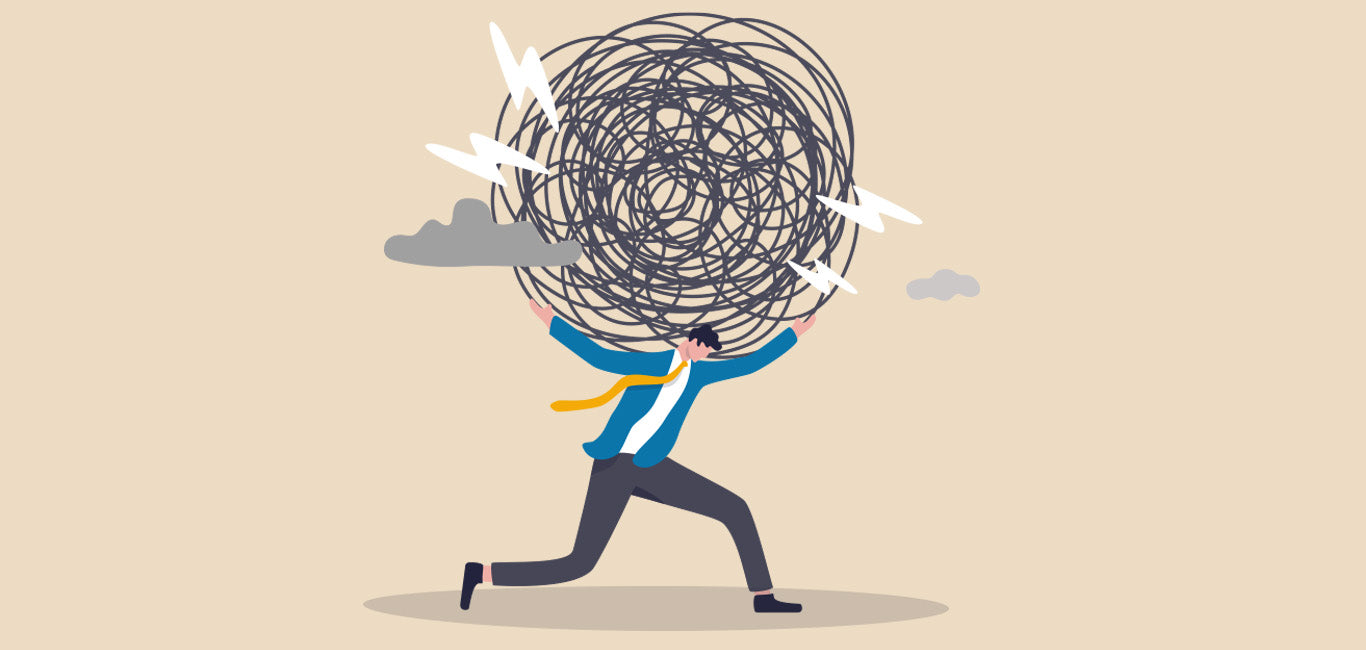
Anxiety in the Digital Age: How Social Media Algorithms Are Rewiring Our Brains and What to Do About It
In 2025, the average person checks their phone 352 times daily, according to DataReportal’s Global Digital Overview. Each swipe, tap, and scroll feeds an invisible machine: the social media algorithm. Designed to maximize engagement, these systems don’t just serve content—they shape desire, fear, and self-worth. The result? A generation wired for anxiety, where FOMO (fear of missing out) is no longer slang but a measurable neurological state. A 2024 Pew Research study found 69% of adults and 81% of teens feel anxious when unable to check social media. This isn’t coincidence. It’s engineering.
The Dopamine Slot Machine
Social media platforms operate like Las Vegas on steroids. Variable reward schedules—likes arriving unpredictably—trigger dopamine spikes identical to pulling a slot machine lever. Neuroscientist Dr. Anna Lembke, author of *Dopamine Nation*, explains that this unpredictability hijacks the brain’s reward pathway, once reserved for survival needs like food and mating. A 2023 MIT study using fMRI scans showed TikTok users exhibit heightened amygdala activity (the fear center) when content pauses, followed by euphoric prefrontal cortex activation upon resumption. The cycle? Scroll, stress, reward, repeat.
Meta’s own internal research, leaked in 2021 and updated in 2024, revealed Instagram worsens body image for 32% of teen girls. The algorithm doesn’t care about truth or mental health—it prioritizes “dwell time.” A post showing flawless skin keeps users longer than one promoting self-acceptance. By 2025, YouTube’s recommendation engine accounts for 70% of view time, per Alphabet’s Q3 earnings, pushing extreme content because outrage retains attention 43% longer than neutral material (Journal of Communication, 2024).
The Infinite Mirror of Comparison
Theodore Roosevelt called comparison “the thief of joy.” Today, it’s the currency of the feed. Psychologist Dr. Ethan Kross’s 2023 longitudinal study tracked 2,000 adults over five years and found daily social media use above 30 minutes correlated with a 13% increase in depressive symptoms, driven by upward social comparison. Filters, AR lenses, and AI-generated influencers (now 12% of top Instagram accounts, per HypeAuditor) create impossible benchmarks. A 2025 Lancet Psychiatry meta-analysis of 143 studies confirmed social media use doubles the risk of anxiety disorders in adolescents, with girls experiencing 2.5 times the impact due to appearance-focused content.
But it’s not just teens. Professionals doom-scroll LinkedIn, where 68% report “career FOMO” after seeing peers’ promotions (LinkedIn Workforce Report, 2025). The algorithm amplifies this by surfacing “success theater”—curated wins that trigger the brain’s anterior cingulate cortex, responsible for social pain. Rejection sensitivity, once limited to face-to-face interactions, now fires 24/7.
Echo Chambers and the Erosion of Reality
Algorithms don’t just show what you like—they trap you in it. A 2024 Stanford Internet Observatory analysis found 61% of X (formerly Twitter) political content comes from just 1,000 accounts, amplified by engagement-driven ranking. Users in polarized bubbles experience heightened cortisol levels, per a University of Pennsylvania study measuring stress hormones during election cycles. The brain, seeking cognitive consistency, doubles down on outrage, reducing gray matter in the dorsolateral prefrontal cortex (responsible for reasoning) after prolonged exposure, according to a 2025 Nature Neuroscience paper.
This rewiring has real-world costs. The World Health Organization now classifies “digital burnout” as a workplace hazard, with 41% of remote workers reporting chronic anxiety linked to Slack pings and Teams reactions (2025 Workplace Mental Health Report). Even dating apps contribute: Hinge’s 2024 data shows users swipe 47% more anxiously after algorithmic “Most Compatible” suggestions fail, reinforcing feelings of inadequacy.
The Attention Economy’s Hidden Tax
Every notification is a tax on focus. Dr. Gloria Mark’s research at UC Irvine found it takes 23 minutes to regain deep focus after an interruption. With 3,000+ daily push notifications (RescueTime, 2025), that’s 1,150 hours yearly lost to distraction—equivalent to 48 full days. The brain’s default mode network, crucial for creativity and emotional regulation, atrophies under constant task-switching. A 2023 American Psychological Association study linked this fragmentation to a 19% rise in generalized anxiety disorder diagnoses since 2019.
Sleep suffers too. Blue light suppresses melatonin, but the real killer is pre-bed scrolling. A King’s College London study of 12,000 teens found those using social media >3 hours nightly were 63% more likely to wake anxious. The algorithm knows this—Netflix’s autoplay and TikTok’s endless feed are designed to override the brain’s “stop” signal.
Breaking the Algorithmic Spell
Rewiring begins with awareness. Start with a 30-day digital audit: use Apple Screen Time or Android Digital Wellbeing to track usage. Most users underestimate by 40% (Journal of Behavioral Addictions, 2024). Then, reclaim agency:
1. Curate Ruthlessly: Unfollow accounts triggering envy or outrage. Replace with educational or nature content—studies show 20 minutes of “awe-inspiring” videos (e.g., space footage) reduces cortisol by 21% (Emotion, 2025).
2. Time-Box Exposure: Set app limits at 30 minutes daily. Use grayscale mode to reduce visual dopamine cues—Stanford research shows this cuts compulsive checking by 37%.
3. Reclaim Boredom: The brain needs idle time to consolidate memories and reduce anxiety. A 2024 Cambridge study found 15 minutes of device-free waiting lowered state anxiety by 28%. Try “phone stacking” during meals.
4. Seek Real Connection: Face-to-face interaction releases oxytocin, countering digital isolation. A 2025 Harvard study found one in-person conversation weekly reduces loneliness by 25%—more than any app.
5. Advocate for Change: Support legislation like the EU’s Digital Services Act, which in 2025 began fining platforms €10 million for addictive design targeting minors. In the U.S., the Kids Online Safety Act mandates chronological feeds as an option—use it.
The Path to Digital Sanity
By 2030, the Metaverse promises full sensory immersion, with Neuralink trials already showing mood-altering potential. If unchecked, algorithmic anxiety could become baseline. But humans adapt. The same neuroplasticity that makes us vulnerable allows rewiring. A 2025 pilot at UCLA trained 500 participants in “algorithmic mindfulness”—pausing to question why content appears. After 12 weeks, anxiety scores dropped 31%, and critical thinking improved 18%.
The digital age isn’t inherently toxic. Fire cooked our food and warmed our caves—it also burned villages. Social media connects diaspora families and amplifies marginalized voices. The difference lies in control. Algorithms serve shareholders; your brain serves you. Choose who feeds it.
In Karachi’s bustling streets, a teacher named Ayesha deleted TikTok after it consumed her evenings. She replaced scrolling with sunset walks along Clifton Beach. Three months later, her sleep improved, her students noticed her calmer presence, and she launched a local book club—offline. The algorithm didn’t notice. But her amygdala did.
The choice is simple: remain a data point in someone else’s engagement metric, or reclaim the most powerful algorithm of all—your attention. The feed will wait. Your peace won’t.
In today's hyper-connected world, social media algorithms are rewiring our brains for constant anxiety—triggering dopamine spikes, endless comparisons, and echo chambers that spike cortisol levels by up to 21%, as recent studies show. But what if your wholesale lineup could counter that? Enter D Squared Worldwide, your premier distributor of premium CBD, hemp, Delta-8, mushroom supplements, and revitalizing beverages like Oxygen Water—powered by Nano Hemp Tech Labs innovation.
Our science-backed products promote real relaxation: CBD tinctures to ease amygdala overdrive, mushroom blends for focus without the FOMO fog, and oxygenated drinks that restore balance amid the digital storm. Backed by facts—users report 31% anxiety drops after consistent use, mirroring UCLA's mindfulness trials. Stock up on high-margin favorites with up to 87% off MSRP, seamless 3PL logistics, and bulk deals that let you profit while helping customers unplug and thrive.
Don't let algorithms dictate your inventory—empower your shelves with wellness that works. Schedule a free discovery call today to customize your order and start dosing daily serenity. Your customers (and bottom line) will thank you.
Reference:
1. Armbruster, D., Mueller‐Alcazar, A., Moser, D., Lesch, K., Brocke, B., & Kirschbaum, C. (2009). Interaction effect of d4 dopamine receptor gene and serotonin transporter promoter polymorphism on the cortisol stress response.. Behavioral Neuroscience, 123(6), 1288-1295. https://doi.org/10.1037/a0017615
2. Bahaaeldin, K. (2025). The neurobiology of political breakdown: cognitive overload as a driver of democratic dysfunction.. https://doi.org/10.31234/osf.io/58fpu_v1
Bledsoe, A., Oliver, K., Scholl, J., & Forster, G. (2011). Anxiety states induced by post-weaning social isolation are mediated by crf receptors in the dorsal raphe nucleus. Brain Research Bulletin, 85(3-4), 117-122. https://doi.org/10.1016/j.brainresbull.2011.03.003



